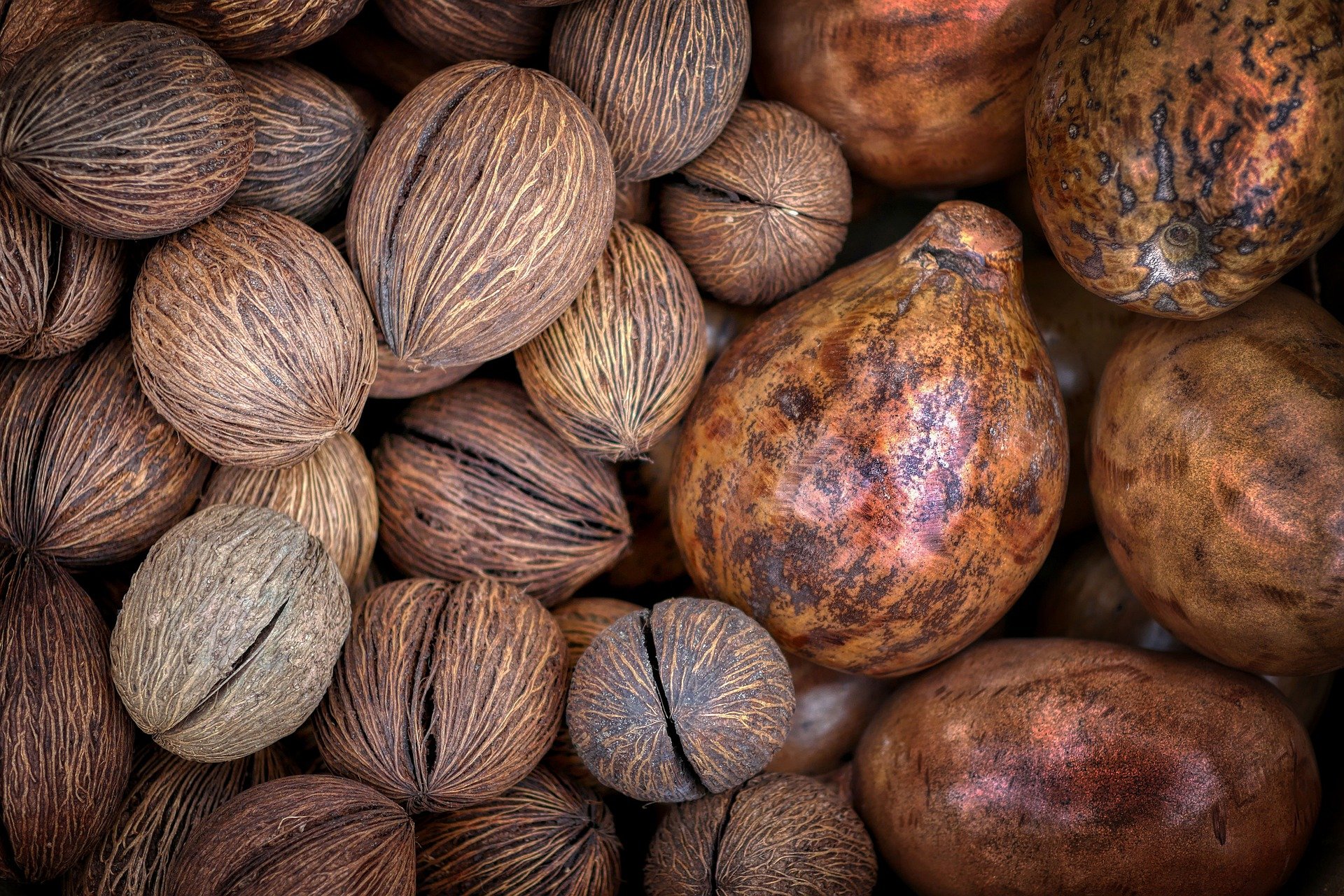
Nutmeg
Nutmeg is the seed of the evergreen tree Myristica fragrans, which is native to the Banda Islands in Indonesia. The tree produces two spices: nutmeg, which comes from the seed, and mace, which comes from the aril that surrounds the seed. Nutmeg has a long history of use, both as a spice and a medicine.
The use of nutmeg can be traced back to ancient civilizations. The ancient Greeks and Romans used nutmeg as a spice and a medicine, and it was highly valued for its unique flavor and aroma. Nutmeg was also used in traditional Chinese medicine and Indian Ayurvedic medicine to treat a variety of conditions.
During the Middle Ages, nutmeg was a highly sought-after spice, and it played a major role in the spice trade. The Banda Islands, where nutmeg is native, were the only source of nutmeg, and control of the islands was highly contested. The Dutch eventually gained control of the islands in the 17th century, and they controlled the nutmeg trade for many years.
In the 19th century, nutmeg was introduced to other parts of the world, such as the Caribbean and Sri Lanka, and it is now widely cultivated. Today, nutmeg is grown in many tropical regions around the world, including Indonesia, India, Sri Lanka, and Grenada.
In cooking, nutmeg is used to add a unique and warm flavor to a wide variety of dishes. It is a common ingredient in spice blends such as pumpkin spice, and it is also used to flavor a variety of savory dishes, such as stews, soups, sauces, and vegetables. Nutmeg is also used in sweet dishes, such as cakes, cookies, pies, and puddings. It is also used in traditional dishes like eggnog, mulled wine and also in many cheese dishes.
In addition to its use in cooking, nutmeg has a long history of use in traditional medicine. It is believed to have anti-inflammatory and pain-relieving properties, and it is used to treat a variety of conditions such as indigestion, diarrhea, and insomnia. It is also believed to have hallucinogenic properties, although it is not considered safe to consume in large amounts.
Here are some common dishes that go well with nutmeg:
Desserts: Nutmeg is often used to flavor sweet dishes such as pies, cakes, cookies, and puddings. It is a common ingredient in pumpkin pie spice and also in apple pie spice.
Dairy-based dishes: Nutmeg is often used to flavor dairy-based dishes such as custards, puddings, and cream-based soups. It is also a common ingredient in many cheese dishes.
Vegetable dishes: Nutmeg can be used to add flavor to a variety of vegetable dishes, such as roasted or mashed root vegetables, and green beans.
Soups and stews: Nutmeg is a common ingredient in soups and stews, adding a unique and warm flavor to dishes such as pumpkin soup, lentil stew, and beef stew.
Meat dishes: Nutmeg can be used to flavor meats such as pork, chicken, and beef. It is particularly well suited to dishes that are braised or stewed.
Drinks: Nutmeg is often used to flavor drinks such as eggnog, mulled wine, and cider.
Curry and spice blends: Nutmeg is a common ingredient in curry powder and other spice blends, adding a unique and warm flavor to dishes such as chicken tikka masala, biryani and more.
Pasta dishes: Nutmeg can be used to add a unique and warm flavor to pasta dishes such as macaroni and cheese, and also in cream-based pasta dishes.
Rice dishes: Nutmeg is a common ingredient in rice dishes such as pilafs, and also in some seafood dishes.
Seafood dishes: Nutmeg pairs well with seafood dishes, adding a unique and warm flavor to dishes such as crab cakes, and also in a variety of seafood soups and chowders.
Overall, nutmeg is a versatile spice that can be used to add a unique and warm flavor to a wide range of dishes, both sweet and savory. It is particularly well suited to dishes that are creamy, cheesy, or have a dairy base, and it is also a common ingredient
